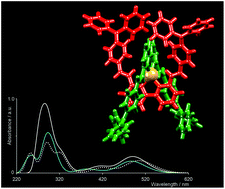Exploring copper(i)-based dye-sensitized solar cells: a complementary experimental and TD-DFT investigation†
Abstract
The structures and properties of the homoleptic copper(I) complexes [Cu(1)2][PF6] and [Cu(2)2][PF6] (1 =

* Corresponding authors
a
Department of Chemistry, University of Basel, Spitalstrasse 51, CH-4056 Basel, Switzerland
E-mail:
catherine.housecroft@unibas.ch, edwin.constable@unibas.ch
Fax: +41 61 267 1018
Tel: +41 61 267 1008
b Department of Chemistry, University of Basel, Klingelbergstrasse 80, CH-4056 Basel, Switzerland
The structures and properties of the homoleptic copper(I) complexes [Cu(1)2][PF6] and [Cu(2)2][PF6] (1 =

 Please wait while we load your content...
Something went wrong. Try again?
Please wait while we load your content...
Something went wrong. Try again?
B. Bozic-Weber, V. Chaurin, E. C. Constable, C. E. Housecroft, M. Meuwly, M. Neuburger, J. A. Rudd, E. Schönhofer and L. Siegfried, Dalton Trans., 2012, 41, 14157 DOI: 10.1039/C2DT31159C
To request permission to reproduce material from this article, please go to the Copyright Clearance Center request page.
If you are an author contributing to an RSC publication, you do not need to request permission provided correct acknowledgement is given.
If you are the author of this article, you do not need to request permission to reproduce figures and diagrams provided correct acknowledgement is given. If you want to reproduce the whole article in a third-party publication (excluding your thesis/dissertation for which permission is not required) please go to the Copyright Clearance Center request page.
Read more about how to correctly acknowledge RSC content.
 Fetching data from CrossRef.
Fetching data from CrossRef.
This may take some time to load.
Loading related content
